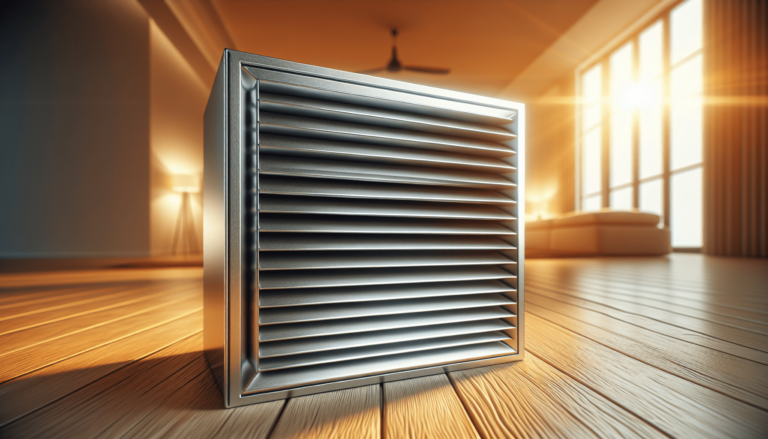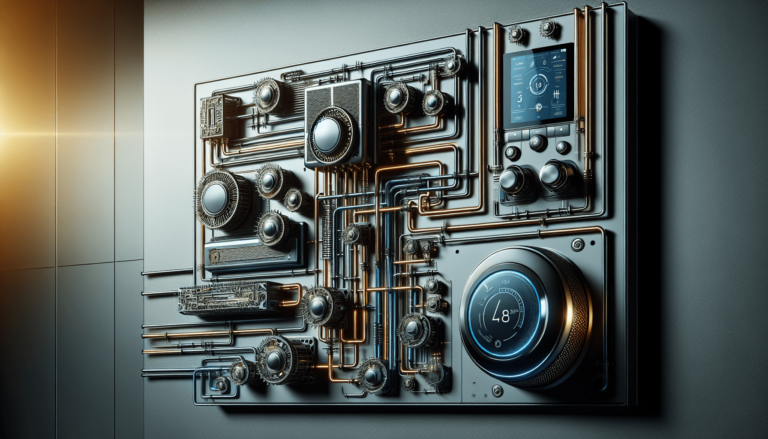

HVAC Services
Get Professional Repairs From The Area's Trusted HVAC Technicians. Ask About Our Services! We Offer Professional Heating & Cooling System Repairs And Guarantee Long-Lasting Results.
Got Question? Call us: (850) 678-2665Financing
Choosing the Most Energy-efficient HVAC Models
Choosing the Most Energy-efficient HVAC Models. Learn about the benefits of energy-efficient HVAC models and how to choose the most efficient option for your home. Reduce energy consumption, save money on bills, and contribute to environmental conservation.
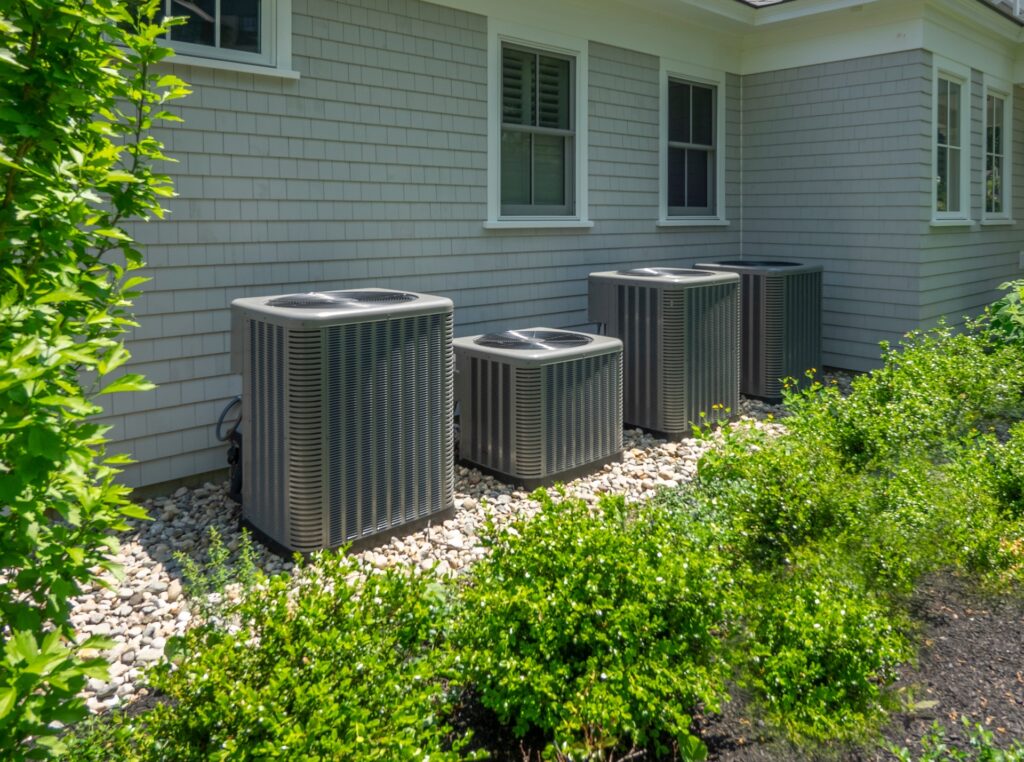
If you’re in the market for a new HVAC system, it’s important to consider energy efficiency. Choosing an energy-efficient model not only helps reduce your carbon footprint, but it can also save you money on your energy bills. In this article, we’ll explore the benefits of energy-efficient HVAC models and provide some tips on how to choose the most efficient option for your home. Whether you’re looking to upgrade your current system or install a brand new one, making an informed decision about energy efficiency will ensure a comfortable and cost-effective solution for your heating and cooling needs.
The Importance of Choosing Energy-efficient HVAC Models
Choosing energy-efficient HVAC (Heating, Ventilation, and Air Conditioning) models is not only beneficial for your pocket but also for the environment. By opting for energy-efficient HVAC models, you can lower your energy consumption, reduce your energy costs, and contribute to environmental conservation. In this article, we will delve into the reasons why choosing energy-efficient HVAC models is essential and discuss important factors to consider when making your selection.
Lower Energy Consumption
Energy-efficient HVAC models are designed to consume less energy while still providing the same level of comfort. When you choose an energy-efficient model, it can significantly reduce the amount of electricity or fuel required to run the system. This means that your HVAC system will operate efficiently by using less energy, translating to lower energy consumption.
By reducing your energy consumption, you not only save money on your utility bills but also contribute to the overall conservation of natural resources. This is particularly important considering the increasing demand for energy worldwide and the environmental impact associated with its production.
Reduced Energy Costs
One of the most significant advantages of opting for energy-efficient HVAC models is the potential for reduced energy costs. Since these models are designed to operate more efficiently, they consume less energy and, as a result, lead to lower energy bills. Over time, the savings can add up significantly, allowing you to allocate those funds towards other essential expenses.
By reducing your energy costs, you can also have more control over your monthly budget. With the money saved from lower energy bills, you could invest in home improvements, plan for a vacation, or simply have more disposable income to allocate as you see fit. The financial benefits of choosing energy-efficient HVAC models are undeniable.
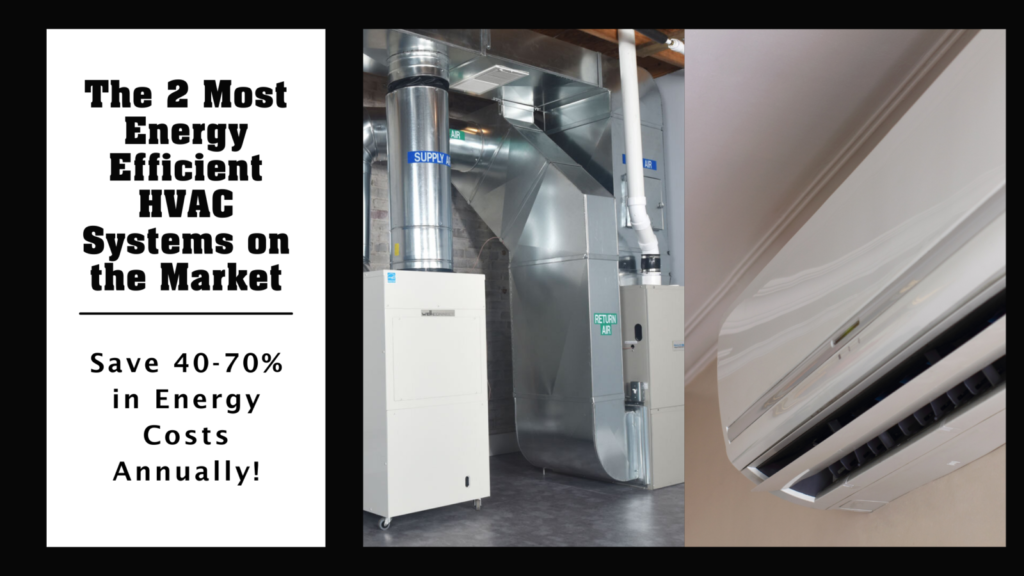
This image is property of thebossservices.com.
Environmental Benefits
When you choose energy-efficient HVAC models, you are not only benefiting yourself but also the environment. Traditional HVAC systems can have a significant carbon footprint due to their high energy consumption. By opting for energy-efficient models, you can help mitigate the environmental impact associated with HVAC systems.
Energy-efficient HVAC models minimize greenhouse gas emissions and reduce the overall demand for electricity or fuel. This leads to a decrease in air and water pollution, as well as a reduction in the depletion of natural resources. By making this eco-conscious choice, you become an active participant in the global effort to combat climate change and protect our planet for future generations.
Factors to Consider when Choosing Energy-efficient HVAC Models
When selecting an energy-efficient HVAC model, it is important to consider specific factors that can guide you in making the right choice. These factors include SEER ratings, Energy Star certification, size and capacity, and variable speed technology. By understanding these elements, you can make an informed decision and ensure that your HVAC system meets your specific needs.
SEER Ratings
SEER (Seasonal Energy Efficiency Ratio) rating is an essential factor to consider when choosing an energy-efficient HVAC model. The SEER rating measures the cooling efficiency of an air conditioner or heat pump. It represents the ratio of cooling output in British thermal units (BTUs) to the energy consumed in watt-hours.
A higher SEER rating indicates a more energy-efficient system. In the United States, the minimum required SEER rating for new residential HVAC systems is 14. However, more energy-efficient models typically have SEER ratings ranging from 16 to 25 or higher. When evaluating HVAC models, look for those with higher SEER ratings to ensure optimal energy efficiency.
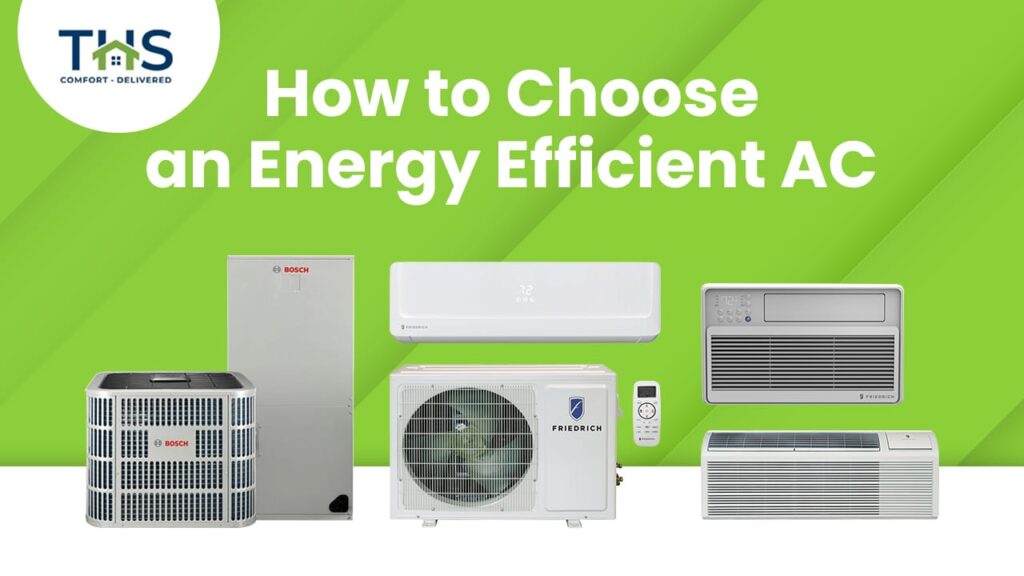
This image is property of blog.totalhomesupply.com.
Energy Star Certification
Energy Star certification is another crucial aspect to consider when choosing an energy-efficient HVAC model. Energy Star is a program established by the U.S. Environmental Protection Agency (EPA) and the U.S. Department of Energy (DOE) to identify and promote energy-efficient products.
An HVAC system with Energy Star certification has met strict energy efficiency standards set by the EPA. Energy Star certified models are tested and proven to consume less energy compared to standard models, without sacrificing performance. By choosing an Energy Star certified HVAC system, you can be confident that you are investing in a product that will save you money on energy costs, while also protecting the environment.
Size and Capacity
Selecting the appropriate size and capacity of an HVAC system is crucial for its optimal performance. A properly sized system ensures efficient energy usage and provides the desired level of comfort without unnecessary energy waste.
To determine the size and capacity of the HVAC system you need, it is important to calculate the heating and cooling load of your home or space. This calculation takes into account factors such as square footage, insulation, number of windows, and local climate conditions. Consulting with an HVAC professional can help you accurately determine the size and capacity that best suits your specific requirements.
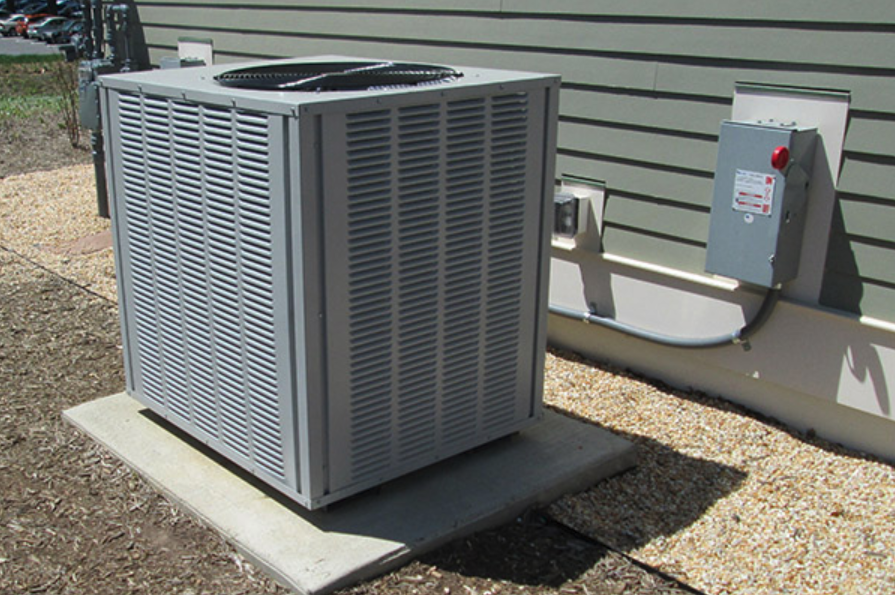
This image is property of aeroseal.com.
Variable Speed Technology
variable speed technology is an innovative feature that can greatly enhance the energy efficiency of your HVAC system. Traditional HVAC systems operate at a fixed speed, resulting in frequent cycling on and off. This can lead to energy waste and temperature fluctuations.
In contrast, HVAC systems equipped with variable speed technology adjust their speed based on the specific cooling or heating needs of your space. These systems can operate at various capacities, ranging from low to high, depending on the current conditions. By adjusting the speed accordingly, variable speed HVAC systems can maintain a consistent temperature while using less energy.
The benefits of variable speed technology include improved energy efficiency, enhanced comfort due to more consistent temperatures, and quieter operation. Consider choosing an HVAC model that incorporates this technology for maximum efficiency and comfort.
SEER Ratings and their Significance
Definition of SEER Ratings
SEER ratings, or Seasonal Energy Efficiency Ratio, measure the cooling efficiency of air conditioners and heat pumps. It represents the ratio of cooling output in British thermal units (BTUs) to the energy consumed in watt-hours. The higher the SEER rating, the more energy-efficient the system.
SEER ratings are determined through standardized testing procedures, which simulate various weather conditions and cooling loads. These tests involve measuring the cooling capacity of the system at different outdoor temperatures and the power consumption of the system under those conditions. The results are then used to calculate the SEER rating.
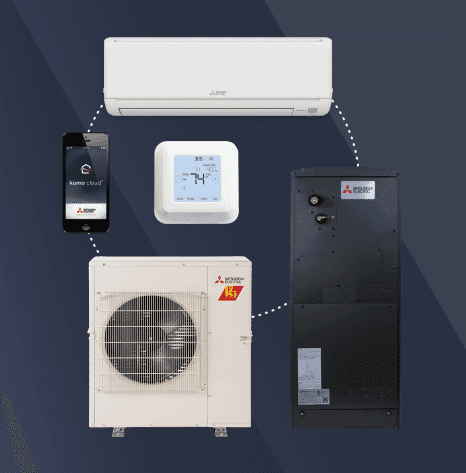
This image is property of www.airplusair.com.
Minimum Required SEER Ratings
In the United States, regulations mandate a minimum SEER rating of 14 for new residential HVAC systems. This requirement ensures that basic energy efficiency standards are met, allowing homeowners to enjoy some level of energy savings compared to older, less efficient models.
However, it is worth noting that more advanced and energy-efficient HVAC models often have higher SEER ratings. These models can have SEER ratings ranging from 16 to 25 or even higher. Investing in a higher SEER-rated system can result in greater energy savings and a more environmentally-friendly operation.
Benefits of High SEER Ratings
Opting for HVAC systems with high SEER ratings brings a multitude of benefits. Firstly, high SEER-rated systems consume less energy to provide the same level of cooling comfort as lower-rated systems. This results in significant energy savings and lower utility bills over the lifespan of the system.
Additionally, high SEER-rated systems often incorporate advanced technologies and components that contribute to improved performance and durability. These systems tend to run quieter, have better humidity control, and provide increased efficiency during the hottest summer months. By investing in a high SEER-rated HVAC system, you not only save money but also enjoy enhanced comfort and long-lasting reliability.
Understanding Energy Star Certification
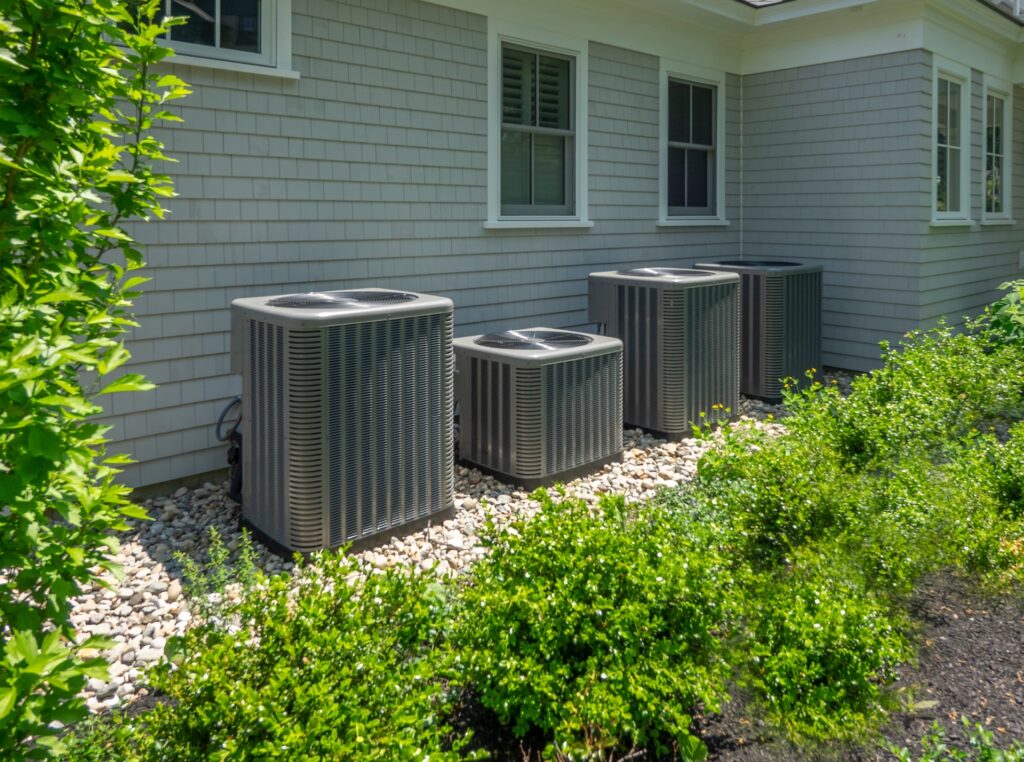
This image is property of neeeco.com.
What is Energy Star Certification
Energy Star Certification is a program established by the U.S. Environmental Protection Agency (EPA) and the U.S. Department of Energy (DOE) to identify and promote energy-efficient products. The Energy Star label is given to products that meet strict energy efficiency criteria set by the EPA.
To qualify for Energy Star certification, HVAC systems undergo thorough testing and evaluation to ensure they meet or exceed the energy efficiency standards specified by the program. These standards are designed to reduce energy consumption and greenhouse gas emissions, while also maintaining the performance and features expected from HVAC systems.
By choosing an HVAC model with Energy Star certification, consumers can have confidence in the energy efficiency and environmental friendliness of the product. The Energy Star label serves as a reliable indicator of the quality and reliability of the HVAC system.
Advantages of Energy Star Certified HVAC Models
Opting for HVAC models that have obtained Energy Star certification offers several advantages. Firstly, Energy Star certified models are proven to consume less energy compared to standard models, without sacrificing performance. This translates into significant energy savings and reduced utility bills.
Energy Star certified HVAC models also contribute to environmental conservation by minimizing greenhouse gas emissions. The reduced energy consumption of these models leads to a lower carbon footprint and a decrease in overall demand for electricity or fuel. By choosing an Energy Star certified HVAC system, you are actively participating in the effort to combat climate change and protect the environment.
Furthermore, Energy Star certified HVAC models often come equipped with advanced features and technologies that enhance comfort, improve indoor air quality, and provide a better overall user experience. These systems are designed with a focus on energy efficiency and customer satisfaction, ensuring that you receive optimal performance and comfort in your home.
Determining the Size and Capacity
Calculating the Heating and Cooling Load
Determining the appropriate size and capacity of an HVAC system requires calculating the heating and cooling load of your home or space. The heating load refers to the amount of heat that needs to be supplied to maintain a comfortable indoor temperature during colder months. The cooling load, on the other hand, is the amount of heat that needs to be extracted from the indoor environment during warmer months.
Several factors contribute to the heating and cooling load of a space, including square footage, insulation, number and size of windows, ceiling height, local climate conditions, and even the number of occupants. By considering these factors, you can calculate the heating and cooling load in British thermal units (BTUs) required for your space.
Right-sizing the HVAC System
After determining the heating and cooling load, it is important to select an HVAC system that is appropriately sized to meet the demands of your space. Oversized systems may cycle on and off frequently, leading to energy waste and inefficient operation. Undersized systems, on the other hand, may struggle to reach and maintain the desired indoor temperature, resulting in discomfort and increased energy consumption.
To ensure optimal performance and energy efficiency, it is recommended to consult with an HVAC professional. These professionals have the knowledge and experience to accurately assess your specific needs and recommend an HVAC system that is the right size and capacity for your space. By selecting the appropriate size, you can maximize energy efficiency and enjoy uninterrupted comfort.
The Role of Variable Speed Technology
How Variable Speed Technology Works
Variable speed technology is an innovative feature that can greatly enhance the energy efficiency and performance of HVAC systems. Traditional HVAC systems typically operate at a fixed speed, which can result in frequent cycling on and off. This can lead to temperature fluctuations, inefficient energy usage, and increased wear and tear on the system.
HVAC systems equipped with variable speed technology offer more flexibility in adjusting their speed to match the specific cooling or heating needs of your space. These systems can operate at various capacities, ranging from low to high, based on the current conditions. By adjusting the speed accordingly, variable speed HVAC systems can provide consistent temperatures and optimal comfort, while also using less energy.
The variable speed technology works by utilizing advanced motor controls and sophisticated electronics within the system. These components allow the system to modulate its speed based on real-time temperature readings, outdoor weather conditions, and overall cooling or heating demand. By responding dynamically to these factors, the system can deliver the right amount of conditioned air precisely when and where it is needed.
Benefits of Variable Speed HVAC Systems
Variable speed HVAC systems offer numerous benefits that contribute to energy efficiency, comfort, and overall system performance. Firstly, these systems consume less energy compared to traditional fixed-speed systems. By adjusting the speed to match the current cooling or heating demand, they operate more efficiently and avoid unnecessary energy waste.
Additionally, variable speed HVAC systems provide more consistent temperatures throughout your space. The ability to operate at low speeds for extended periods ensures a more even distribution of conditioned air, eliminating hot or cold spots. This helps maintain a comfortable indoor environment, reduces temperature fluctuations, and allows the HVAC system to run more quietly.
Another advantage of variable speed technology is its ability to improve indoor air quality. By operating at lower speeds, these systems have longer run cycles, which can result in better air filtration and humidity control. This can be particularly beneficial for individuals with allergies or respiratory conditions, as it helps remove allergens, pollutants, and excess moisture from the air.
In summary, variable speed HVAC systems deliver energy efficiency, enhanced comfort, improved air quality, and quieter operation. By considering HVAC models that incorporate this technology, you can optimize the performance of the system while minimizing your energy consumption.
Additional Features to Look for
Smart Thermostats
Smart thermostats are innovative devices that offer advanced functionality and energy-saving capabilities. These thermostats are equipped with sensors and smart technology that allow for precise control of your HVAC system.
Smart thermostats offer features such as programmable schedules, remote accessibility through mobile apps, and the ability to learn your temperature preferences over time. By utilizing these features, you can optimize the energy usage of your HVAC system, reducing unnecessary heating or cooling when you are away from home or during periods of lower activity.
Zoned Heating and Cooling
Zoned heating and cooling is a feature that allows for customized temperature control in different areas or zones of your home. This feature is particularly useful if you have multiple floors or rooms with varying temperature needs.
By dividing your home into separate zones, each with its own thermostat, you can independently control the temperature in each area. This eliminates the need to provide heating or cooling to areas that are not in use, resulting in energy savings and increased comfort.
Zoned heating and cooling can be achieved through the use of dampers in the ductwork, which control the airflow to each zone. By investing in an HVAC system that supports zoning, you can optimize energy usage and ensure that each area of your home is maintained at the desired temperature.
Air Quality Enhancement
When selecting an energy-efficient HVAC model, it is worth considering additional features that can improve indoor air quality. Poor air quality can have a negative impact on health, leading to allergies, respiratory issues, and other health concerns.
HVAC systems equipped with air quality enhancement features, such as advanced filtration systems or UV germicidal lights, can help remove allergens, pollutants, and pathogens from the air. These features contribute to a healthier indoor environment and can be particularly beneficial for individuals with allergies or respiratory conditions.
By investing in an HVAC system that prioritizes air quality enhancement, you can breathe easier and enjoy a more comfortable and healthy living space.
Seeking Professional Assistance
Benefits of Consulting HVAC Professionals
When choosing an energy-efficient HVAC model, it is highly recommended to consult with HVAC professionals. These professionals have the knowledge, expertise, and experience to guide you in making the right selection based on your specific needs and requirements.
HVAC professionals can assess your space, calculate the heating and cooling load, and recommend the appropriate size and capacity of an HVAC system. They can also provide valuable insights into the latest energy-efficient technologies and features available in the market.
By seeking professional assistance, you can ensure that you make an informed decision and invest in an energy-efficient HVAC system that will provide optimal performance and comfort for years to come.
Choosing Reputable Contractors
When seeking professional assistance for HVAC installation or maintenance, it is vital to choose reputable contractors. Working with reliable contractors ensures that the installation is done correctly, adhering to industry standards and manufacturer guidelines.
To find reputable contractors, consider seeking referrals from friends, family, or neighbors who have recently had HVAC work done. You can also conduct online research and check reviews from previous customers.
When contacting contractors, inquire about their certifications, licenses, and insurance coverage. A reputable contractor will be happy to provide this information and answer any questions or concerns you may have. By selecting a reputable contractor, you can have peace of mind knowing that your HVAC system is in good hands.
Cost Considerations
Initial Cost vs. Long-term Savings
When considering the cost of energy-efficient HVAC models, it is important to evaluate the long-term savings in addition to the initial cost. Energy-efficient models may have a higher upfront cost compared to less efficient models, but they offer substantial long-term savings through reduced energy consumption and lower utility bills.
By investing in an energy-efficient HVAC system, you are essentially investing in your future savings. Over time, the savings in energy costs can outweigh the initial investment, resulting in significant financial benefits.
Considering the long-term savings is particularly important when evaluating financing options. Although financing may increase the total cost, it allows you to enjoy the benefits of an energy-efficient HVAC system immediately, without experiencing the full financial burden upfront. Evaluate the available financing options to determine the best fit for your financial situation and long-term savings goals.
Available Financing Options
When selecting an energy-efficient HVAC model, it is important to explore the available financing options. Financing options can provide flexibility and convenience, allowing you to invest in an energy-efficient system without incurring a large upfront cost.
Many HVAC manufacturers and distributors offer financing programs, which may include low or zero-interest options, flexible repayment terms, or rebates. Additionally, financial institutions, such as banks or credit unions, may offer loan programs specifically tailored for energy-efficient home improvements.
When considering financing options, carefully review the terms and conditions, including interest rates, fees, and repayment schedules. Choose a financing option that best aligns with your financial goals and allows you to enjoy the benefits of an energy-efficient HVAC system while minimizing any financial burdens.
Conclusion
Opting for energy-efficient HVAC models is crucial for reducing energy consumption, cutting energy costs, and contributing to environmental conservation. When choosing an energy-efficient HVAC model, consider factors such as SEER ratings, Energy Star certification, size and capacity, and variable speed technology. These factors will guide you in making an informed decision and ensure that your HVAC system meets your specific needs.
SEER ratings indicate the cooling efficiency of HVAC systems, with higher ratings representing greater energy efficiency. Energy Star certification is a reliable indicator of energy efficiency and environmental friendliness. Determining the appropriate size and capacity of an HVAC system requires calculating the heating and cooling load of your space. Variable speed technology optimizes energy usage and enhances overall performance. Additional features such as smart thermostats, zoned heating and cooling, and air quality enhancement can further improve energy efficiency and comfort.
Consulting HVAC professionals and choosing reputable contractors are essential when selecting and installing energy-efficient HVAC systems. Evaluate the long-term savings and available financing options to make an informed decision based on your financial goals and needs.
By prioritizing energy efficiency and making a well-informed choice, you can enjoy the benefits of an energy-efficient HVAC system, including lower energy consumption, reduced energy costs, and a healthier planet for future generations. Make the smart choice and choose energy-efficient HVAC models.


